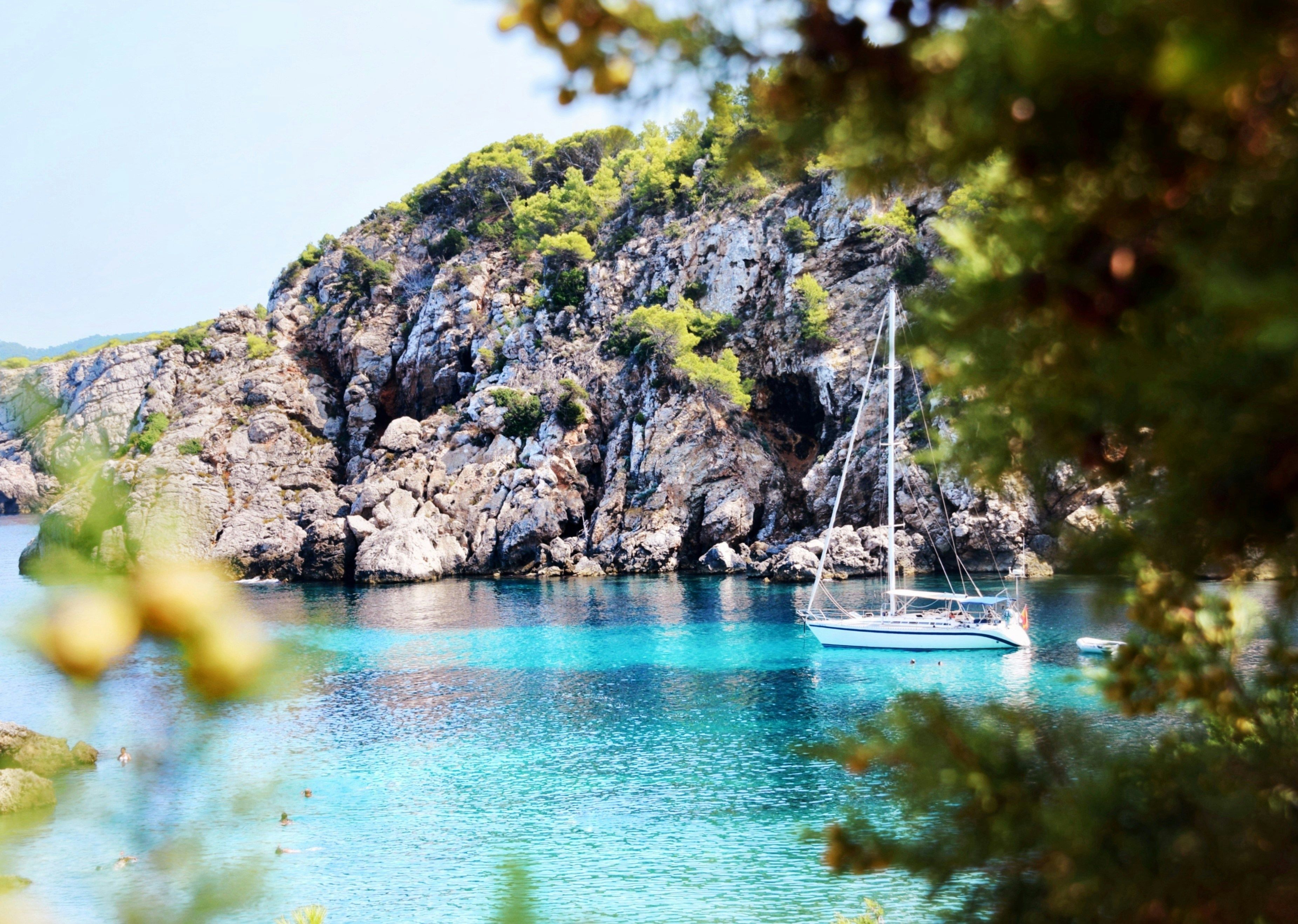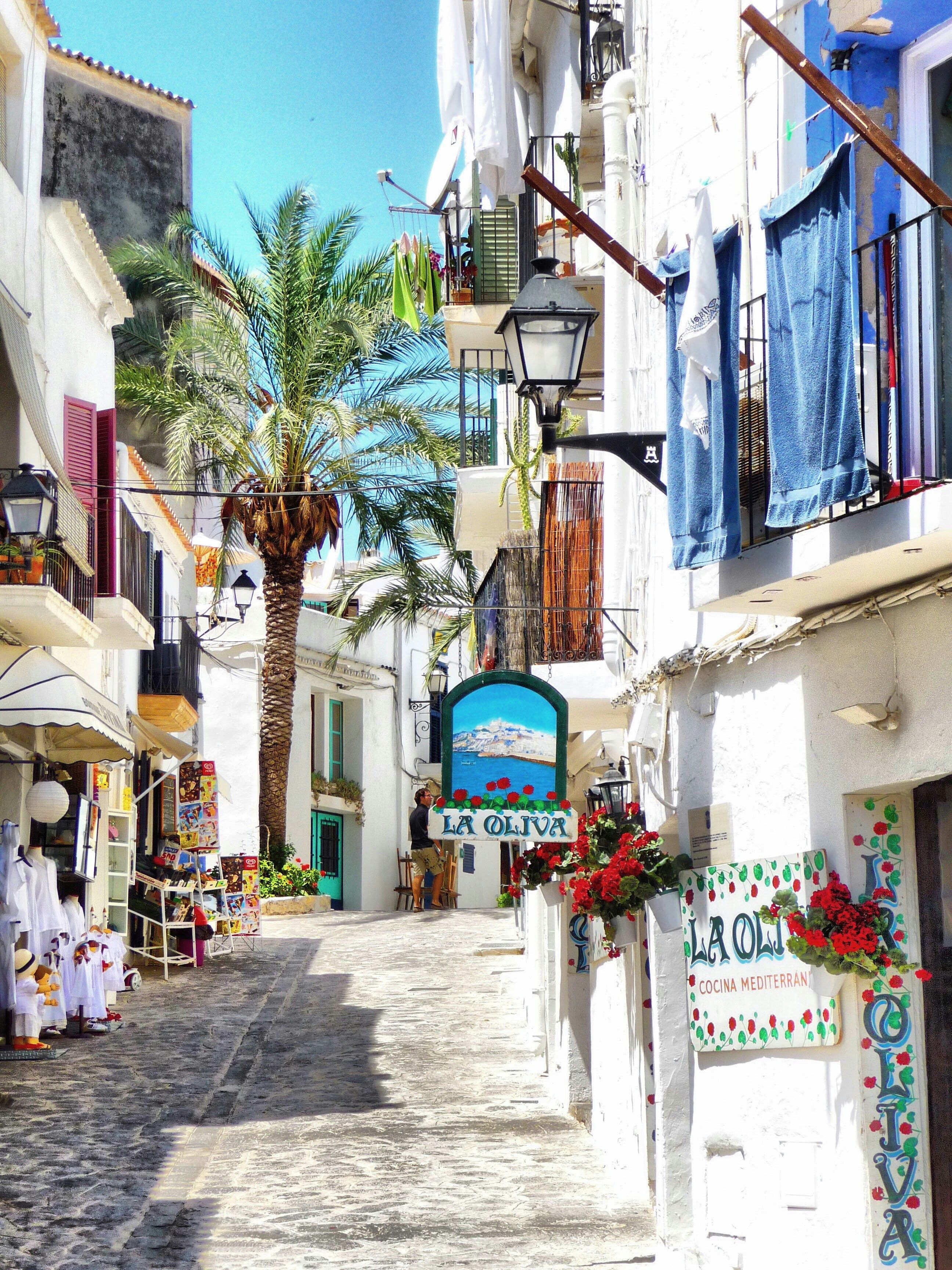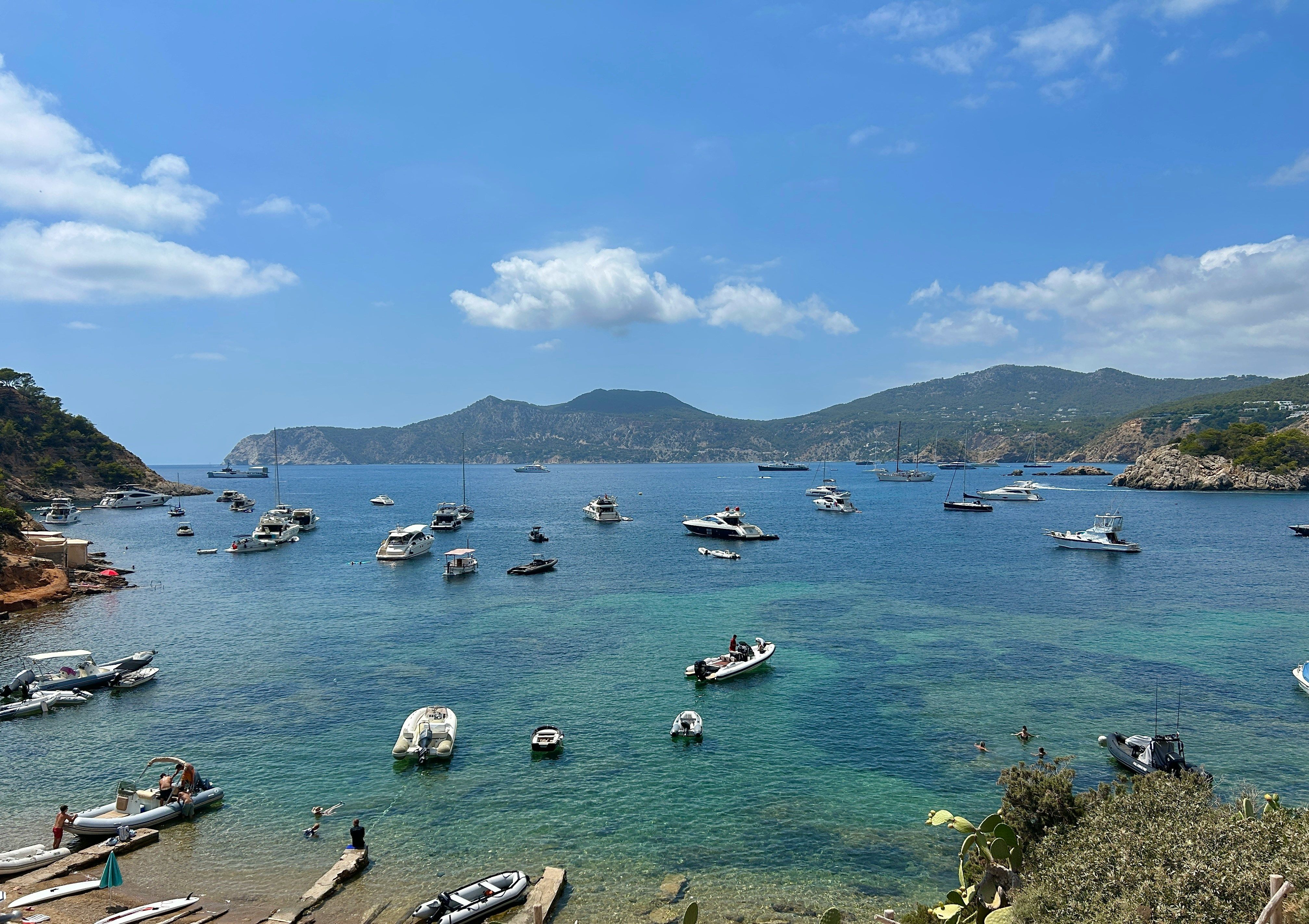Travelling from Valencia to Ibiza: Complete Ferry & Travel Guide
Travel Guides
Travel Guides


The route between Valencia and Ibiza is one of the most popular connections linking mainland Spain with the Balearic Islands. Whether you're planning a holiday escape or a weekend getaway, there are reliable transportation options to get you across the Mediterranean Sea. The ferry route spans approximately 204.6 km (127.1 miles) and offers travellers a chance to experience the beautiful Mediterranean waters. With regular ferry services operating throughout the year, this route provides a convenient and scenic way to reach the famous party island. This comprehensive guide covers everything you need to know about travelling from Valencia to Ibiza, with a focus on ferry options while also touching on alternative travel methods.
When planning your journey from Valencia to Ibiza, you have two main transportation options: flying or taking a ferry. Each option offers different advantages depending on your travel preferences, budget, and schedule.
By ferry, the journey from Valencia to Ibiza covers 110.5 nautical miles (204.6 km) across the Mediterranean Sea. Ferry crossings typically take around 6 hours 25 minutes on average, with the fastest services completing the journey in approximately 4 hours 59 minutes. Ferry travel offers the significant advantage of being able to bring your vehicle to Ibiza, giving you greater freedom to explore the island at your own pace. There are approximately 2 sailings daily, with 17 weekly connections and 76 monthly sailings, providing good flexibility for planning your trip.
The ferry journey itself becomes part of the holiday experience, allowing you to enjoy panoramic sea views, comfortable onboard facilities, and the gradual approach to Ibiza's beautiful coastline. Unlike flying, there's no need to arrive hours before departure, and you'll avoid the hassle of airport security lines. While the journey takes longer than flying, many travellers appreciate the relaxed pace and the opportunity to begin their vacation mode as soon as they board.
You can take a ferry from Valencia to Ibiza. Ferries sail in around 6 hours 25 minutes with about 2 sailings a day. The fastest ferry sails in around 4 hours 59 minutes and is provided by Balearia. Ferry prices can vary depending on season and whether you choose a standard or high-speed service. Departures start as early as 20:30, with the last departure from Valencia to Ibiza at 22:31.
Balearia is the primary ferry operator serving the Valencia to Ibiza route, offering reliable services throughout the year. Their vessels are equipped with a range of amenities designed to make your crossing comfortable and enjoyable. Onboard, you can expect to find comfortable seating areas, cafeterias and restaurants serving hot and cold meals, bars, shops selling travel essentials and souvenirs, and entertainment options. Many ferries also feature outdoor deck areas where you can enjoy the fresh sea air and spectacular views of the Mediterranean.
For those seeking additional comfort, most ferries offer cabin accommodations ranging from standard to premium options. These private cabins provide a place to rest during the journey and are especially recommended for overnight crossings. Families travelling with children will appreciate the dedicated play areas available on many vessels, while business travellers can make use of the quiet lounges to catch up on work.
Vehicle transportation is straightforward on this route, with Balearia accommodating cars, motorcycles, campervans, and bicycles. If you're planning to bring your vehicle, it's advisable to book well in advance, especially during the summer months when demand is highest. Vehicle dimensions and weight restrictions apply, so be sure to provide accurate details when booking.
While the Valencia-Ibiza route operates year-round, service frequency increases during the summer tourist season (May to September). During winter months, you'll find fewer crossings, but the route remains operational for both tourists and residents. Weather conditions in the Mediterranean can occasionally affect sailing schedules, particularly during winter months when storms are more common, so it's worth checking for updates before your journey.

Valencia's ferry terminal is located in the city's port area, approximately 4 kilometres from the city centre. The terminal is modern and well-equipped with essential facilities for travellers, including waiting areas, cafés, restrooms, and ticket offices where you can make last-minute bookings or address any queries before departure.
Reaching the port is straightforward using Valencia's efficient public transportation system. Bus routes 4 and 30 connect the city centre to the port area, while taxis are readily available throughout the city and provide a convenient door-to-door service. If you're driving to the port, follow signs for the Puerto de Valencia or use GPS navigation. The terminal offers both short-term and long-term parking facilities, though prices can be relatively high for extended stays.
It's recommended to arrive at the terminal at least 90 minutes before your scheduled departure time, especially if you're travelling with a vehicle. This allows sufficient time for check-in, security procedures, and boarding. The check-in process is typically efficient, with dedicated lanes for foot passengers and those travelling with vehicles.
Ibiza's main ferry port is conveniently located in Ibiza Town (Eivissa), the island's capital. Upon arrival, you'll find yourself just a short walk from the historic Dalt Vila (Old Town) and many of the island's popular attractions. The port facilities include information points, car rental services, taxi ranks, and several cafés and restaurants where you can grab a refreshment after your journey.
From the port, you have several transportation options to reach your final destination on the island. Public buses connect the port to major towns and resorts, with the central bus station located just a few minutes' walk from the ferry terminal. Taxis are readily available outside the terminal building, offering convenient but relatively expensive transport. During peak season, it's advisable to pre-book a taxi or arrange a hotel transfer to avoid long waits.
If you've brought your own vehicle, you'll find the road network in Ibiza to be well-maintained and signposted. Major resorts like San Antonio and Santa Eulalia are within 30 minutes' drive from the port. Car rental offices are also available at the port if you decide to rent a vehicle upon arrival.
While a day trip from Valencia to Ibiza is technically possible, it presents some challenges due to the ferry schedule and crossing duration. With the earliest departure from Valencia at 20:30 and a journey time of around 6 hours 25 minutes, you would arrive in Ibiza very early in the morning. The return journey would need to be on the following night's ferry, giving you essentially one full day on the island before returning.
If you're determined to make a day trip work, we recommend focusing your time on Ibiza Town and its immediate surroundings. Begin your day with breakfast at one of the cafés near the port, then spend the morning exploring the UNESCO-listed Dalt Vila (Old Town) with its impressive fortifications and narrow, winding streets. After lunch at one of the local restaurants, you could visit the contemporary art museum or relax on Figueretas beach, which is within walking distance of the port area.
A more practical approach would be to plan at least a one-night stay in Ibiza. This allows you to take an evening ferry from Valencia, spend a full day and night on the island, and return the following evening. With this arrangement, you'll have time to venture beyond Ibiza Town to explore some of the island's beautiful beaches, visit the hippy markets, or experience the famous nightlife.
For travellers with more flexible schedules, we recommend spending at least 3-4 days in Ibiza to truly appreciate what the island has to offer. This allows time to explore different regions of the island, relax on various beaches, and perhaps take a boat trip to the neighbouring island of Formentera.
Ibiza offers a diverse range of attractions and activities beyond its world-famous nightlife scene. Here are five top attractions to consider during your visit:
This UNESCO World Heritage site features impressive Renaissance fortifications and offers stunning views over the harbour and surrounding areas. Wander through the cobblestone streets, visit the Cathedral of Our Lady of the Snows, and explore the Archaeological Museum. Open daily, with longer hours during summer months, Dalt Vila provides a fascinating glimpse into Ibiza's rich history.
Located in the southern part of the island, this protected natural area encompasses salt flats, beaches, and woodland. It's a paradise for birdwatchers, with flamingos often spotted in the salt pans. The park's beaches, including Ses Salines and Es Cavallet, are among the most beautiful on the island. Accessible year-round, though facilities may be limited outside summer.
This small but picturesque beach offers spectacular views of the mysterious island of Es Vedrà, a massive rock formation rising from the sea that's surrounded by myths and legends. The beach features golden sand, crystal-clear waters, and several excellent seafood restaurants. Best visited in the morning or late afternoon to avoid crowds during peak season.
Embrace Ibiza's bohemian spirit at the famous hippy markets. Las Dalias in San Carlos (Saturdays year-round, with additional days in summer) and Punta Arabí in Es Caná (Wednesdays, April to October) offer a vibrant atmosphere with handcrafted jewellery, clothing, artwork, and live music.
Experience Ibiza's legendary party scene with a boat party cruise along the coast or visit one of the island's famous beach clubs like Ushuaïa, Nikki Beach, or Blue Marlin. These venues combine stunning settings with world-class DJs, though they operate primarily during the summer season (May to October) and can be quite expensive.

Ibiza Town (Eivissa) serves as the island's cultural and historical centre, with Dalt Vila at its heart. The Marina area offers upscale dining and shopping, while the port district provides more affordable options and convenient transportation links.
San Antonio caters primarily to younger tourists seeking nightlife, with the famous Sunset Strip home to café del Mar and Mambo. The West End contains numerous bars and clubs, though the area has been working to improve its image in recent years.
Santa Eulalia presents a more relaxed, family-friendly atmosphere with a beautiful promenade, yacht marina, and excellent restaurants. The town has a strong artistic heritage and hosts regular cultural events.
For those seeking authenticity, the inland villages like Santa Gertrudis, San Carlos, and San Juan offer a glimpse of traditional Ibizan life, with whitewashed churches, local markets, and family-run restaurants serving island specialties.
Ibiza enjoys a typical Mediterranean climate with hot, dry summers and mild, slightly wetter winters. The summer season (June to September) sees average temperatures between 25-30°C (77-86°F), with July and August being the hottest months when temperatures can occasionally exceed 35°C (95°F). These months offer perfect beach weather with very little rainfall and around 11 hours of sunshine daily.
Spring (April to May) and autumn (October to November) are excellent times to visit, with comfortable temperatures ranging from 18-25°C (64-77°F) and fewer crowds. These shoulder seasons provide ideal conditions for exploring the island and engaging in outdoor activities.
Winter (December to March) remains mild with average daytime temperatures around 15-17°C (59-63°F), though nights can feel chilly. This is the island's wettest period, with January typically receiving the most rainfall. Despite this, many days remain sunny and pleasant, making winter visits still enjoyable for those interested in cultural experiences rather than beach activities.
Regarding ferry operations, the Mediterranean Sea is generally calmer during summer months, making for smoother crossings. Winter can occasionally see rougher conditions, with strong winds sometimes causing delays or cancellations, though this is relatively rare. If you're prone to seasickness, consider travelling during summer or taking preventative medication before boarding.
Ibiza has a reputation as an expensive destination, particularly during the peak summer season, but with careful planning, it's possible to visit on various budgets. Ferry tickets from Valencia to Ibiza vary in price based on season, cabin type, and whether you're bringing a vehicle.
For accommodation, budget travellers can find hostels and basic guesthouses from £30-50 per night, while mid-range hotels typically cost £100-200 per night. Luxury resorts and villas can easily exceed £300-500 per night during high season.
Daily expenses vary significantly depending on your activities. Budget travellers can manage on £50-70 per day (excluding accommodation) by eating at local cafés, using public transportation, and enjoying free or low-cost activities like beaches and hiking. Mid-range travellers should budget £100-150 daily for restaurant meals, some paid attractions, and occasional taxis. Those wanting to experience Ibiza's premium offerings, including famous beach clubs and nightclubs (where entry can cost £50-80 and drinks £15-20), should plan for £200+ daily.
Money-saving tips include visiting during shoulder seasons (May-June or September-October), eating lunch as your main meal at restaurants offering fixed-price menus, and purchasing the Ibiza Disco Ticket for combined club entry if you plan to visit multiple venues.
The peak season in Ibiza runs from late June through early September, coinciding with the height of the European summer holiday period. During these months, the island comes alive with a vibrant atmosphere, world-famous DJs performing at the major clubs, and all tourist facilities operating at full capacity. However, this is also when accommodations reach their highest prices, beaches become crowded, and reservations for restaurants and activities are essential.
The shoulder seasons of May-June and September-October offer an excellent balance of pleasant weather, reduced crowds, and more reasonable prices. During these months, temperatures remain warm enough for beach activities, most establishments are open, and the party scene is still active but less intense. This period is ideal for travellers seeking to experience Ibiza's various attractions without the extreme hustle of high summer.
The off-peak season (November to April) presents a completely different side of Ibiza. Many tourist facilities, including most major clubs and some restaurants, close during winter, but the island takes on a peaceful, authentic character. This period appeals to visitors interested in exploring Ibiza's natural beauty, historical sites, and local culture without the tourism overlay. Accommodation prices drop significantly, and you'll have many beaches and hiking trails almost to yourself.
For families, the shoulder seasons or early summer (before mid-July) offer the best combination of good weather and manageable crowds. Party-focused travellers will want to visit during peak season when the club calendar is in full swing, while those interested in outdoor activities might prefer May, June, or September when temperatures are comfortable for hiking and cycling.

Finding the perfect place to stay in Ibiza is essential for making the most of your island adventure after arriving by ferry from Valencia. The island offers accommodations to suit every budget and travel style.
For solo travellers, Ibiza Town and San Antonio offer numerous hostels and guesthouses with prices starting from around £30 per night in the off-season. These areas provide the perfect balance of nightlife access and convenience for exploring.
Couples might prefer the boutique hotels in Santa Eulalia or the charming apartments in the quieter parts of Ibiza Town, typically ranging from £70-150 per night depending on the season. For a truly romantic experience, consider the smaller hotels in villages like Sant Josep or Santa Gertrudis.
Families will find excellent options in areas like Playa d'en Bossa and Portinatx, where family-friendly resorts offer kids' clubs and swimming pools. Holiday rentals are also abundant, providing more space and self-catering facilities from £100-250 per night for a two-bedroom property.
Book well in advance if travelling during the peak summer months (June-September) when prices can increase significantly and availability becomes limited.
Once you've arrived in Ibiza via the ferry from Valencia, getting around the island is relatively straightforward with several transportation options to choose from.
The public bus network connects most major towns and beaches, with tickets costing between £1.50-4 per journey. During summer, services run more frequently, but they can be limited in the off-season. The main bus station in Ibiza Town serves as the central hub for most routes.
Taxis are readily available throughout the island, particularly in tourist areas. While convenient, they can be expensive, with a 15-minute journey costing approximately £15-25. For more flexibility, car rentals start from about £30 per day and allow you to explore hidden coves and inland villages at your own pace.
For shorter distances in towns like Ibiza Town and Santa Eulalia, walking is pleasant and practical. Cycling is also popular, with bike rentals available from around £10-15 per day – a great way to explore the coastal paths and flatter parts of the island.
If you're staying in more remote areas, we recommend arranging transportation in advance, especially during the busy summer season when services can be in high demand.
Travelling from Valencia to Ibiza by ferry offers a unique and memorable journey across 110.5 nautical miles (204.6 km) of the beautiful Mediterranean Sea. With two daily sailings and 17 weekly options, you have plenty of flexibility to plan your perfect island escape.
Balearia offers the fastest crossing at just 4 hours and 59 minutes, making it possible to leave the mainland behind and be enjoying Ibiza's legendary beaches and vibrant atmosphere in less than half a day. While the average ferry price starts around £267, booking in advance can help you secure the best fares.
Whether you're seeking Ibiza's world-famous nightlife, its surprisingly peaceful natural landscapes, or its crystal-clear waters, the ferry journey from Valencia is the perfect start to your adventure – allowing you to bring your vehicle, pack without restrictions, and enjoy the scenic approach to this magical island.
Book your Valencia to Ibiza ferry crossing today and experience the convenience and pleasure of arriving refreshed and ready to explore everything this stunning Balearic island has to offer.